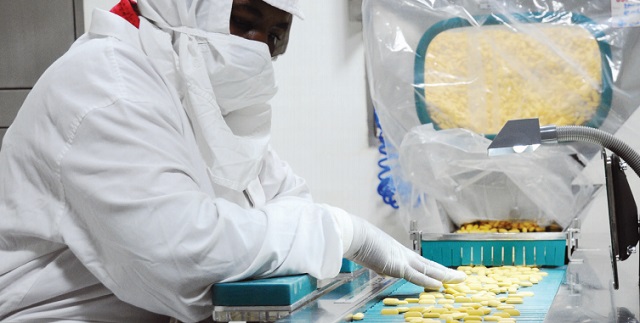
Time for the country to leap into pharma knowledge and great value manufacturing
COMMENT | MORRISON RWAKAKAMBA | Uganda Investment Authority is working with Ministry of Health and other stakeholders to implement establishment of an over 500 acre fully serviced major pharmaceutical industrial park in Nakasongala to spur human and veterinary medicine. This park is expected to be part of 25 zonal industrial parks contained in directives H.E President Yoweri Museveni gave to his Cabinet at the start of 2021-2026 term of office.
This move is part of continuous efforts to actualise National Resistance Movement’s number 5 of the 10 Point Program; “Building an independent, integrated and self-sustaining economy”. It was indeed envisaged that an independent, integrated and self-sustaining economy would stop the leakage of Uganda’s wealth abroad and thus protect democracy, national security and national unity.
In 2018, there were over 300 life sciences companies and over 30 pharmaceutical and medical devices companies in Uganda according to the Foreign Direct Investment (FDI) benchmark from Financial Times Limited. These companies currently manufacture 173 pharmaceutical products according to Uganda National Drugs Authority. Yet, Uganda remains a net importer of pharmaceutical products – and herein lies an opportunity for domestic production to replace imports, save Uganda’s foreign exchange, create jobs and accelerate Uganda into a knowledge economy.
A study conducted by Uganda Investment Authority and UK-aid provides a meta-data driven consensus justifying urgent need to reeve our capacities and move quickly to establish a pharmaceutical industrial park in Uganda:-
- Uganda has proven itself to be highly stable over the past 20+ years: “Under President Museveni, Uganda has experienced relative political stability, democratic progress and economic growth” (Source: US Department of Commerce, 2017).
- Uganda invests 7.3% of its Gross Domestic Product (GDP) on healthcare, one of the highest levels in the world according to World Health Organisation datasets of 2015.Uganda’s pharmaceutical expenditure is growing at 8.4% per annum (in local currency) and was expected to reach US $520 million by 2021. (Source: BMI). Advent of Covid-19 accelerated this spend (More bed capacity, personnel, vaccines etc). In-fact, many factories in Uganda’s industrial parks re-purposed to manufacture masks, sanitary wear for health-workers, hospital beds, oxygen, etc – helping to save lives and keep the economy afloat.
- Uganda is the Member of East African Community which imports 70% of its pharmaceutical worth over US $1.3 billion per annum. This is a staring market for pharma products from Nakasongala Industrial Park.
- Total pharmaceutical products imports into Sub-Saharan Africa reached a record of US $9.5 billion in 2019 (Source: UN-Comtrade). This is again, a beckoning market for products from Nakasongala Pharmaceutical Industrial Park now that Uganda is also a signatory to the Africa Continental Free Trade Area.
- An East African Community Medicines Agency has been established; that will provide for central registration of medicines produced by member countries and is to conduct harmonisation operations in the region which will reduce registration times and this will facilitate tradability of pharma products from the economic block. At continental level, the Treaty establishing African Medical Agency under NEPAD was ratified in 2018, widening harmonisation efforts across the Continent. (Source: AU:INT).
- More specifically, the Regional Pharmaceuticals Manufacturing Action Plan under the foregoing EAC arrangement, has set a target that at least 50% of purchases by EAC national medicines procurement agencies are sourced from regional manufacturers.
- Uganda has good availability of skilled and educated employees with 12 colleges and universities providing courses in pharmaceutical subjects and 4 specialist research institutions. This makes Uganda very attractive for pharma sector investors.
- In a similar regard, Uganda has an early mover investor advantage. According to the World Economic Forum’s Human Capital index; Uganda was ranked 3rd globally in workforce deployment, recruitment potential, workforce trainability and labour participation including engagement of women and youth. Uganda retains position number one of adult literacy in East Africa.
- According to the World Bank, Uganda has one of the lowest crime rates and most stable inflation rate in East Africa – averaging 4.89%.
- According to Bank of Uganda, the economy is expected to rebound at more than 6% growth in 2022 – this is a strong show of Uganda’s economic resilience in face of Covid-19 shocks and disruptions.
- Uganda is the most open Country in the region with no restrictions on ownership or capital movements and no foreign exchange restrictions.
The Investment Code Act of 2019 implemented by UIA details further broader incentives that will benefit Pharma investors. From corporate income tax rebates, exemptions on plant and machinery, cheaper industrial electricity and water to free land in the industrial park(s), among others. For Uganda, it’s right place – and time. Africa’s pathogenic economy has been exploited by others from a long time. It’s time to end this. This is the moment!
****
Morrison Rwakakamba, Chairman – Uganda Investment Authority.
mrwakakamba@gmail.com
 The Independent Uganda: You get the Truth we Pay the Price
The Independent Uganda: You get the Truth we Pay the Price


